.
A healthy and fruitful vegetable garden is impossible without feeding your plants. After all, plants (like humans) need food and nutrition. In short: they need fertiliser. There are different kinds of fertilisers: mineral, organic and natural. Mineral fertilisers mainly consist of inorganic material in the form of water-soluble salts of chemical origin. They are artificial fertilisers. Organic fertilisers, on the other hand, primarily comprise substances in organically bound form. Unlike mineral fertilisers, the plant nutrients in organic fertilisers are not salts that dissolve quickly in water but are “packaged” into organically grown structures. Nevertheless, organic fertilisers are highly processed, too.
Natural fertilisers are unprocessed, usually composted substances from nature that contain plenty of nutrients for your plants. They can be of animal, plant or even human origin, are easy to handle and can be found locally. This article deals with natural fertilisers from animals.
Brown Gold: Manure
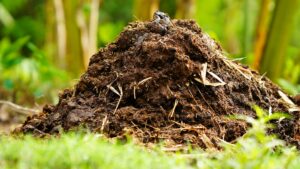
To the gardener, manure is gold! When we speak of manure, we mostly think of cattle or horse manure. However, manure is a general term for all faeces collected in stables and pens. Cattle, horses and chickens are good manure providers, but the excrements of other animals like sheep, goats and pigs are also usable. Even the faeces of cats, dogs, rabbits and other pets can be used in the garden. For hygienic reasons, however, pet excrement must be composted first.
Manure is a mixture of animal faeces, urine, water and bedding material. Straw and sawdust are usually used as bedding material and it’s distributed on the floor of stables and cages.
We can distinguish between fresh, rotted and composted manure. Depending on its consistency, we have liquid or solid manure.
We hobby gardeners usually use solid manure in different mixtures and with different additives. Manure in sacks is always rotted manure.
Nutrient content
Manure is an extraordinary, natural all-round fertiliser. It contains all important plant nutrients like nitrogen, phosphorus, potassium and trace elements as well as organic material which all contribute to the formation of humus. The most important plant nutrients are nitrogen, phosphorus and potassium. They should be distributed in a ratio of 100 (nitrogen), 15 (phosphorus) and 60 (potassium). That’s exactly the distribution in a manure heap.
The manure’s nutritional balance depends, among others, on the animal type and breed, the sex and age of the animals and the season. Further influences on the nutritional balance are the food the animals eat, how the manure is processed and the type and ratio of bedding material it is mixed with.
Where to get manure
If you have a farmer in your neighbourhood: lucky you! Most probably, he’ll be happy if you take some of the manure. If you live in the city, you may ask in riding stables for horse manure.
Ask about the animals’ health. They should not have been treated with antibiotics or anthelmintics. Otherwise, there may be residues of the substances in the manure. In a flower garden that may not be as harmful as in a vegetable garden. Nevertheless, even traces can harm the soil’s microorganisms. Manure with straw as bedding is better than manure with sawdust. Saw dust is a carbon-rich material that requires nitrogen to decompose. Also, the manure should contain more excrement than bedding material; do not use pure faeces.
Manure “temperatures”
In the past, manure was often classified according to “temperature”. Some gardeners, especially the anthroposophical ones are still doing it this way. They distinguish the manure of different animals according to a scale from “cold” potassium-rich pig manure to “hot” phosphor- and nitrogen-rich chicken manure. In between range the manures of cattle and horses, with horse manure being slightly “warmer” than cattle manure.
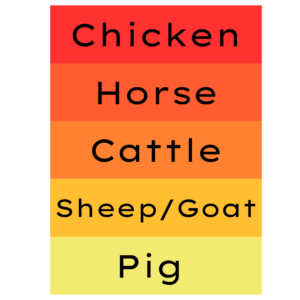
Manure “temperatures” from hot to cold
Manure – a problem for the environment?
If used improperly, manure can be harmful for the environment
Nutrient run-off
Unfortunately, part of the nutrients disappears unused. That’s the case with all fertilisers. Nitrogen disappears as nitrate through surface run-off and washing out and as nitrogen gas, ammonia and nitrous oxides through outgassing.
If the manure lies near a river or lake, it may be washed off into the waterway which leads to surplus nutrients. This can cause excessive growth of undesirable water plants like algae, a process known as eutrophication.
You can avoid that by planting a buffer strip of vegetation along the waterside that catches run-off nutrients. Also, make sure that you don’t apply manure to your garden just before rain is forecast.
Odour
I don’t have to tell you that fresh manure has an unpleasant smell. In my garden, that’s no problem as no one’s living close by, but if you have immediate neighbours, the smell may cause a problem. Therefore, it’s best to use composted manure. If you add manure to your compost heap, cover it with dried material to keep the odour at bay.
Pathogens
Fresh manure can contain pathogens like bacteria and viruses which is why you should always wear gloves when handling fresh manure. When the manure is composted, however, it will generate sufficiently high temperatures to kill off any pathogens.
How can you best reduce nutrient loss and thus prevent negative effects on the environment? By composting manure, fertilising with it at the right time, in the right amount and working it into the ground you can prevent these possible dangers for the environment.
Let’s have a look at manure from different animals.
Cattle manure
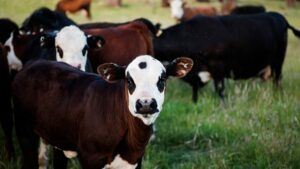
Nutrient content: 0.6 % nitrogen, 0.3 % phosphorus, 1.0 % potassium
Nutrient effect: 1st year: 45 %, 2nd year: 35 %, 3rd year: 20 %
(Source: raiffeisen.com)
Considering how thoroughly cattle process their food, it’s no wonder that they produce a fertiliser of such a high quality. After chewing, the food passes the four stomach parts, rumen, reticulum, abomasum and omasum. Due to their special digestive system, cattle ruminate for at least eight hours per day.
Most gardeners value cattle manure as a well-balanced fertiliser. Almost half the nutrients are released within the first year, the rest in the second and third year in portions (see above). That means you can fertilise a non-fertilised soil in the first year with cattle manure and in the following years add a smaller amount. Cattle manure is mild and doesn’t burn the plant roots if you have taken too much of it.
Cattle manure contains all the nutrients that plants want, macros and micros. By combining a long-term fertiliser like cattle manure with a short-term fertiliser like chicken manure you can achieve a good overall nutrient balance.
Cattle manure rots slower than horse manure and thus needs longer to become compost with good nutrient content. Fresh cattle manure is sticky and smeary and can’t be easily handled.
Fertilising with cattle manure
Use three kilograms max (approx. 4 – 8 litres) of rotted cattle manure per square metre and season.
Divide the manure into three “portions”. Basic fertilisation is usually carried out once a year in spring. It aims to fill up the soil’s nutrient content so that it can provide the plants with all they need. About one month after this basic fertilisation, it’s time for maintenance fertilisation for nutrient-hungry plants. That’s when you give the second and third portions of the manure. You can make a liquid maintenance fertiliser with cattle manure by letting it steep in a bucket of water.
Horse manure
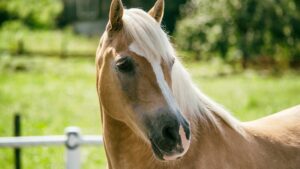
Nutrient content: 0.5 % nitrogen, 0.3 % phosphorus, 1 % potassium
Nutrient effect: 1st year: 60 %, 2nd year: 25 %, 3rd year: 15 %
The horse’s digestive system is different from that of the ruminant cow. Grass, hay and concentrate are chewed and processed in the digestive system and excreted in a larger and drier consistency.
Horse manure is “warmer” than cattle manure and gardeners often use it for warm beds (for plants, not the gardeners😊). It rots easily and quickly. Horse manure has a good balance of macro- and micro-nutrients. If you have a horse stable in your vicinity, it’s most likely that you can get horse manure from them. Horse owners usually are glad to get rid of the stuff and will happily allow you to take as much as you want.
Horse manure is a long-term fertiliser but it works faster than cattle manure. Most nutrients are released during the first year. Horse manure doesn’t have a high nitrogen content and is therefore best mixed with a nitrogen-high fertiliser like chicken manure.
Fertilising with horse manure
The right dosage of horse manure depends on many factors and you must ask yourself the following questions:
How well-rotted is the manure? What do you want to grow? What type of soil do you have in your garden? What’s your soil’s structure, mull content and nutrient content?
An approximate recommendation is to use not more than 3 kilograms of rotted horse manure per square metre and season. It’s best to mix it with a nitrogen-rich fertiliser like chicken manure, especially if it contains a lot of bedding. If you mix it with other fertilisers, adjust the amount accordingly. Horse manure with a lot of bedding material should be composted first to avoid temporary nutrient loss.
Chicken manure
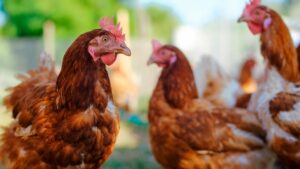
Nutrient content: 3.0 % nitrogen, 1.6 % phosphorus, 1.5 % potassium
Nutrient effect: 1st year: 75 %, 2nd year 15 %, 3rd year: 10 %
Chickens produce a quick-working fertiliser. They eat hastily and shortly afterwards deliver dry and “hot” manure. Chicken manure has a higher nitrogen content and works faster than cattle or horse manure. That’s partly due to them eating more protein-rich food.
Chicken manure provides a quick nutrient “shot” to your plants. A good soil can store part of the nutrients, especially phosphorus and potassium whereas nitrogen is immediately absorbed. Contrary to other types of manure, chicken manure doesn’t contain many mull-binding substances making it a good complement at maintenance fertilisation.
Fertilising with chicken manure
When fertilising with chicken manure, it’s best to do so in early summer, in relatively small portions but often. Use it in combination with other manure. A few handfuls (not more than 200 ml) per square metre are enough. Dried chicken manure has a higher nutrient concentration than fresh one. You can make a liquid feed from chicken manure by putting a few handfuls of it into a bucket, filling it up with water and letting it rest for 24 hours. Either use it like that or dissolve it further to fertilise weak plants. It also speeds up the composting process.
Sheep and goat manure

Nutrient content: 0,95 % nitrogen, 0,6 % phosphorus, 2,0 % potassium
Nutrient effect: 1st year: 65 %, 2nd year: 20 %, 3rd year: 15 %
Sheep, like goats, produce a dry and nutrient-rich manure which must rot for some time. Then it decomposes and becomes crumbly, thus making it easier to handle in the garden. Fresh manure often contains many weed seeds that die above 60 °C.
From spring to autumn, sheep and goats are usually out on the pasture which makes it hard to collect their manure. In winter, however, they are often in the stable where the manure and urine (+ bedding material) can be collected. This manure must rot for at least half a year. This rotted manure is an ideal soil improver.
Fertilising with sheep and goat manure
Sheep and goat manure is a valuable nutrient supplement. Mix sheep manure with garden or leave compost to increase the decomposing process.
Sheep and goat manure are a great way to improve the soil, increase the mull content and support microorganisms.
Pig manure

Nutrient content: 0,8 % nitrogen, 0,7 % phosphorus, 2,5 % potassium
Nutrient effect: 1st year: 35 %, 2nd year: 35 %, 3rd year: 30 %
Fresh pig faeces stink horribly, there’s no way to sugarcoat that. Regarding its chemical composition, however, and its potassium, nitrogen and phosphorus content, pig manure is rather great. It contains other macro nutrients like magnesium, sulphur and calcium, as well as trace elements like copper and manganese.
More than any other manure, the nutrient content of pig manure depends on what they feed on. Pigs are omnivores and – like humans – eat almost anything. Unfortunately, it’s rather hard to lay your hands on pig manure (figuratively speaking). Only when you have your pigs or a pig farmer in your vicinity you can get some. Even then, it’s important to let the manure rot. As it is cold and moist, this process takes a relatively long time.
Fertilising with pig manure
Pig manure is a great fertiliser for potatoes due to its high potassium. It’s a long-term fertiliser that releases its nutrients slowly. Therefore, it’s best applied in autumn to prepare the beds for the next season.
The whole animal
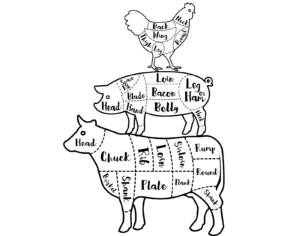
It sounds disgusting at first to use slaughterhouse waste in your vegetable garden. On further reflection, however, it’s not more disgusting than manure. In today’s time with its attitude of resourcefulness and recycling, it should be politically correct to fertilise with animal waste, provided that it has been handled in the right way. However, everybody must decide for themselves if they want to take fertiliser based on slaughterhouse waste.
No animal is slaughtered only to gain plant nutrients. Slaughterhouse waste is a byproduct that goes right onto the waste heap if not used as fertiliser. A considerable part of the animal can be used as nutrient-rich fertiliser, for example, bones, horns, hooves, claws and blood. In the EU the use of wool, fur, feathers and hair is allowed in organic farming. These byproducts don’t have many nutrients but can be used as mulch. Please look up what animal fertilisers are allowed for organic farming in your country.
Bone and horn meal
Approximate nutrient content of bone meal: 7.0 % nitrogen, 8 – 9 % phosphorus, 0,3 – 1 % potassium
Approximate nutrient content of horn meal: 9 % nitrogen, 8 % phosphorus, 1 % potassium
Bone meal which contains a particularly large amount of phosphorus is a long-term fertiliser. You can work in the meal in autumn to prepare the soil for the coming season. It releases the nutrients slowly for about three years, therefore fertilisation every other year is enough. Bone meal also contains trace elements and lime and is a great fertiliser for tomatoes, root vegetables and berry bushes. It’s especially suitable for loamy soil. The risk of over-fertilisation is very low.
A word of warning, though: Dogs may find it very interesting when you fertilise with animal fertilisers. They may even want to dig the place up to find the source of this (at least for them) heavenly smell. To prevent all neighbouring dogs from gathering at your vegetable patch for a digging party, water your garden thoroughly after bringing out animal fertiliser.
Horn meal contains a bit more nitrogen than bone meal. Horns (mostly from cattle) consist of the nitrogen-rich substance creatine. The nitrogen content of packaged horn meal varies a bit but is usually about 8 – 12 %. Like bone meal, horn meal releases its nutrients slowly and thus is a good long-term fertiliser.
Blood meal and meat meal
Approximate nutrient content of blood meal: 14 % nitrogen, 0,2 % phosphorus, 1 % potassium
Approximate nutrient content of meat meal: 10 % nitrogen, 3 % phosphorus, 1 % potassium
Blood meal is – you might have guessed it – dried, ground blood from slaughtered animals. It contains a high amount of nitrogen and trace elements but few phosphorus and potassium. It’s not suitable for fertilisation in autumn but excellently suitable for maintenance fertilisation of cauliflower, cabbage, leek, spinach and celery. Fertilise often and in relatively small amounts during early summer. Work the blood meal thoroughly into the soil and water it well.
A mixture of bone and blood meal makes a nitrogen-, phosphorus- and potassium-rich fertiliser that works fast, yet is sustainable.
Meat meal is made from slaughtering and butchering waste. It contains less nitrogen but more phosphorus than blood meal. In the EU, meat meal cannot be purchased regularly but is mixed into certified fertilisers for organic farming.

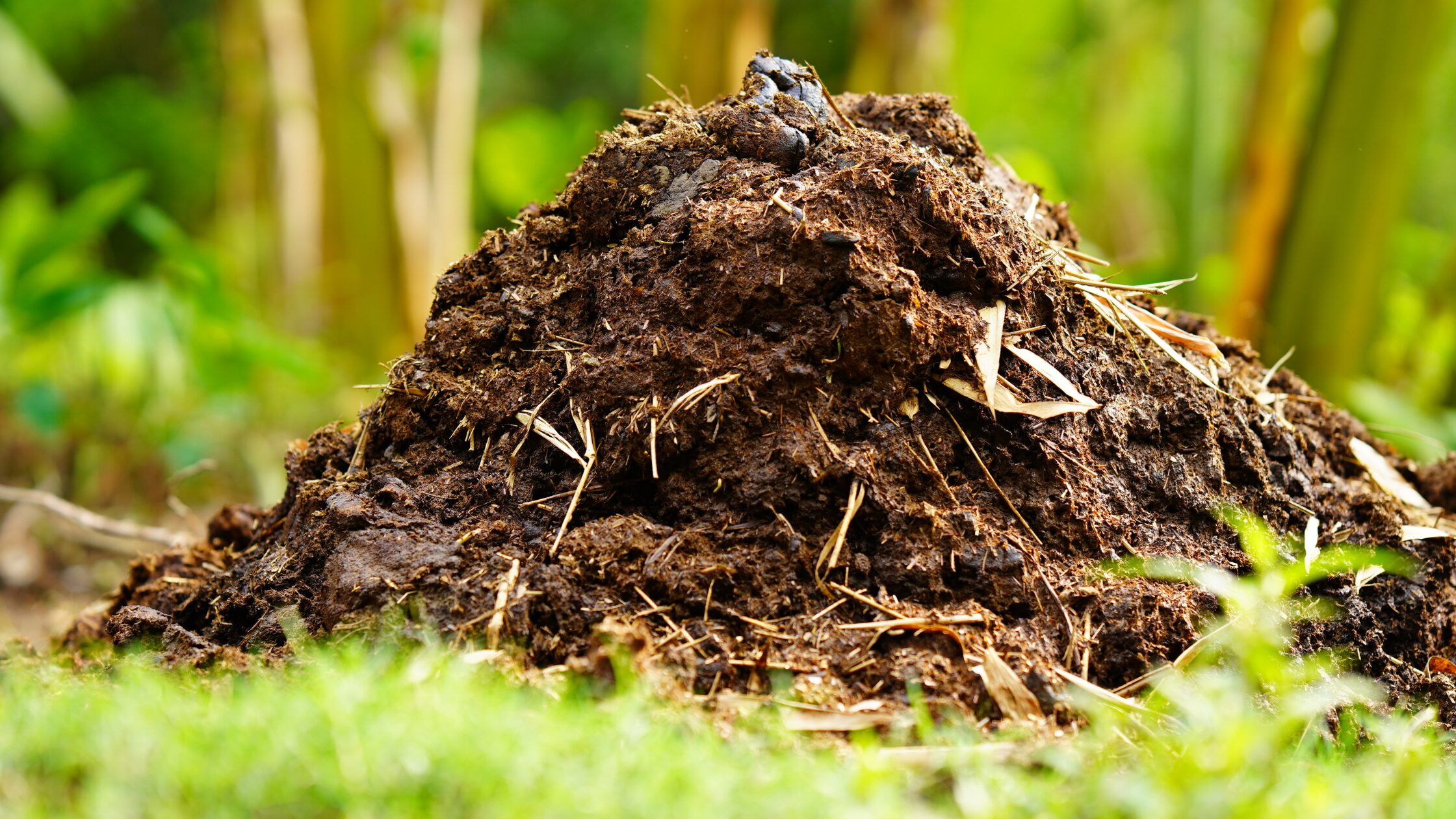
0 Comments